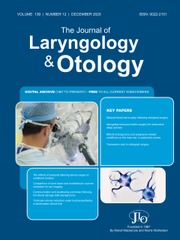No CrossRef data available.
Article contents
Retrospective review of 33 cases of paediatric retropharyngeal and parapharyngeal infections and a proposed algorithm for managing future cases
Published online by Cambridge University Press: 14 July 2025
Abstract
Retropharyngeal and parapharyngeal infections can be managed surgically or conservatively. A trial of medical treatment before considering computed tomography (CT) imaging may be appropriate.
This is a retrospective review of patients with retropharyngeal and parapharyngeal infections between October 2022 and April 2023. Descriptive and statistical analysis compared surgically and conservatively managed patients.
There were 33 patients (median age 58 months). CT imaging was acquired for 30 of 33 patients (90.9 per cent) and 25 had a CT scan within 24 hours of presentation. Fourteen patients (42.4 per cent) were managed surgically. The mean duration of antibiotics for surgically and conservatively managed patients was not significantly different (19.9 vs 21.4 days, p = 0.73). Larger lesions were observed on the CT scans of surgically treated patients (22.8 vs 15.6 mm, p = 0.01).
Management of paediatric retropharyngeal and parapharyngeal infections can be surgical or conservative. We propose a management algorithm that allows an initial trial of intravenous antibiotics before CT imaging for selected patients.
Information
- Type
- Main Article
- Information
- Copyright
- © The Author(s), 2025. Published by Cambridge University Press on behalf of J.L.O. (1984) LIMITED.
Footnotes
Michael Fitzsimons takes responsibility for the integrity of the content of the paper

